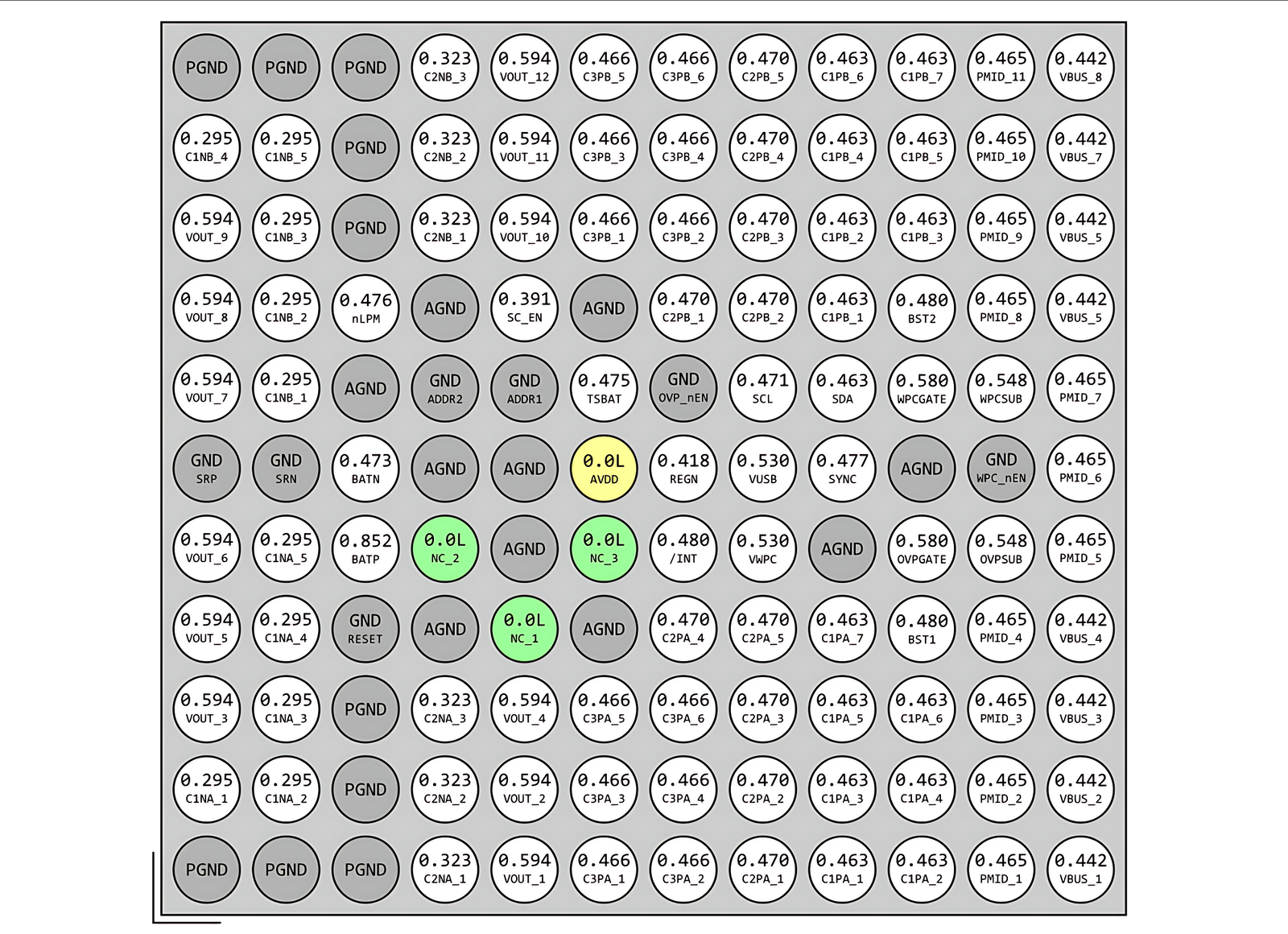Understanding IC 6KC17 - Power Management IC Pinout and Repair Guide


The IC labeled 6KC17 is a complex Power Management Integrated Circuit (PMIC), often found in modern mobile phones and electronic devices. This IC handles various power operations such as battery management, voltage regulation, USB power control, and multiple system power outputs. It also communicates with the main CPU using control lines such as I2C (SDA/SCL) and interrupt pins.
📌 What Is a Power Management IC (PMIC)?
A PMIC is a system-on-chip (SoC) that controls the power needs of a device. It includes buck converters, boost converters, LDOs (low-dropout regulators), battery charging circuits, power path control, protection features, and communication interfaces. In a smartphone, a PMIC distributes voltage to the processor, camera, Wi-Fi, charging system, USB ports, and more.
🔍 IC 6KC17 Pin Function Overview
This IC has many pins, but here’s a simplified overview of the key categories:
- VBUS / VUSB / VOUT / PMID: These are related to USB power input and voltage output lines.
- PGND / AGND: These are power grounds and analog grounds.
- BATP / BATN: Battery positive and negative sense lines.
- SCL / SDA: Serial Clock and Serial Data lines for I2C communication with CPU.
- RESET, INT, AVDD: Control and logic pins for system integration.
- TSBAT: Battery temperature sensor input.
- REGN: Internal regulated power for the IC.
- C1/C2/C3/C2PA/B/A etc.: Internal signal names, typically part of DC-DC converter or analog switch blocks.
⚙️ Key Pin Functions and Descriptions
| Pin Name | Description | Expected Voltage |
|---|---|---|
| VBUS_x | USB 5V input lines from charger | 4.5V to 5.2V |
| VOUT_x | Power output rails to the main board | 1.8V, 2.8V, 3.3V etc. |
| BATP / BATN | Connects to battery terminals | 3.7V to 4.2V |
| PMID_x | Mid rail between charger and battery | ~4.2V |
| SDA / SCL | Data and Clock lines for I2C communication | Pull-up to 1.8V or 3.3V |
| TSBAT | Battery temperature sensor (thermistor) | ~1V (varies with temp) |
| REGN | Internal regulated voltage output | Typically 6V or 3.3V |
| INT / RESET | Interrupt or reset signals to/from CPU | Logic level (0 or 1.8V) |
| AVDD | Analog core power supply input | 1.8V or 3.3V |
🔧 How This IC Is Used in Mobile Phones
The 6KC17 IC performs the following functions inside a mobile phone:
- Manages USB input power (VBUS) and decides how to distribute it
- Charges the battery through BATP and BATN pins with built-in protection
- Provides multiple voltage outputs (VOUT) to different sections of the phone
- Monitors battery temperature via TSBAT and stops charging if it's unsafe
- Communicates with CPU via SDA and SCL to report battery, temperature, or faults
- Controls power sequencing during boot-up or reset conditions
🧪 Testing the IC on a Dead or Faulty Phone
If the phone doesn’t turn on or charge, this IC could be the cause. You can test it as follows:
- Use a multimeter to check VBUS pins – they should show ~5V if the USB is connected.
- Measure BATP and BATN. You should get 3.7–4.2V across these pins if a battery is connected.
- Check REGN output – it should show a stable voltage (~6V or 3.3V).
- Measure VOUT rails to ensure power is reaching system components.
- Check SCL and SDA lines for I2C activity using an oscilloscope or logic analyzer.
- If there’s a short on VBUS, BAT, or VOUT, the IC might be damaged and need replacement.
🛠️ How to Replace the IC
- Use a hot air station with proper temperature (~330–360°C).
- Apply flux around the IC to loosen it safely.
- Use tweezers to lift the IC after it’s fully heated.
- Clean the pads using solder wick and isopropyl alcohol.
- Reball the new IC (if BGA) or align it properly and solder.
- Reflow and allow cooling before powering on.
⚠️ Cautions
- Always test for shorts before applying power.
- Use ESD protection (anti-static wrist strap).
- Replace the IC only if you are confident with micro-soldering.
- Do not overheat other nearby components during hot air work.
✅ Conclusion
The 6KC17 PMIC is a critical IC in smartphones for managing battery and system power. It handles input from the USB port, charges the battery, controls multiple voltage rails, and communicates with the CPU. Understanding its pins, functions, and voltages is key to diagnosing and repairing power-related issues in mobile phones. If your phone is not charging or not turning on, this IC could be faulty. With the right tools and care, it can be replaced and restored to full function.
© 2025 Mobile Repair Lab | All rights reserved.
